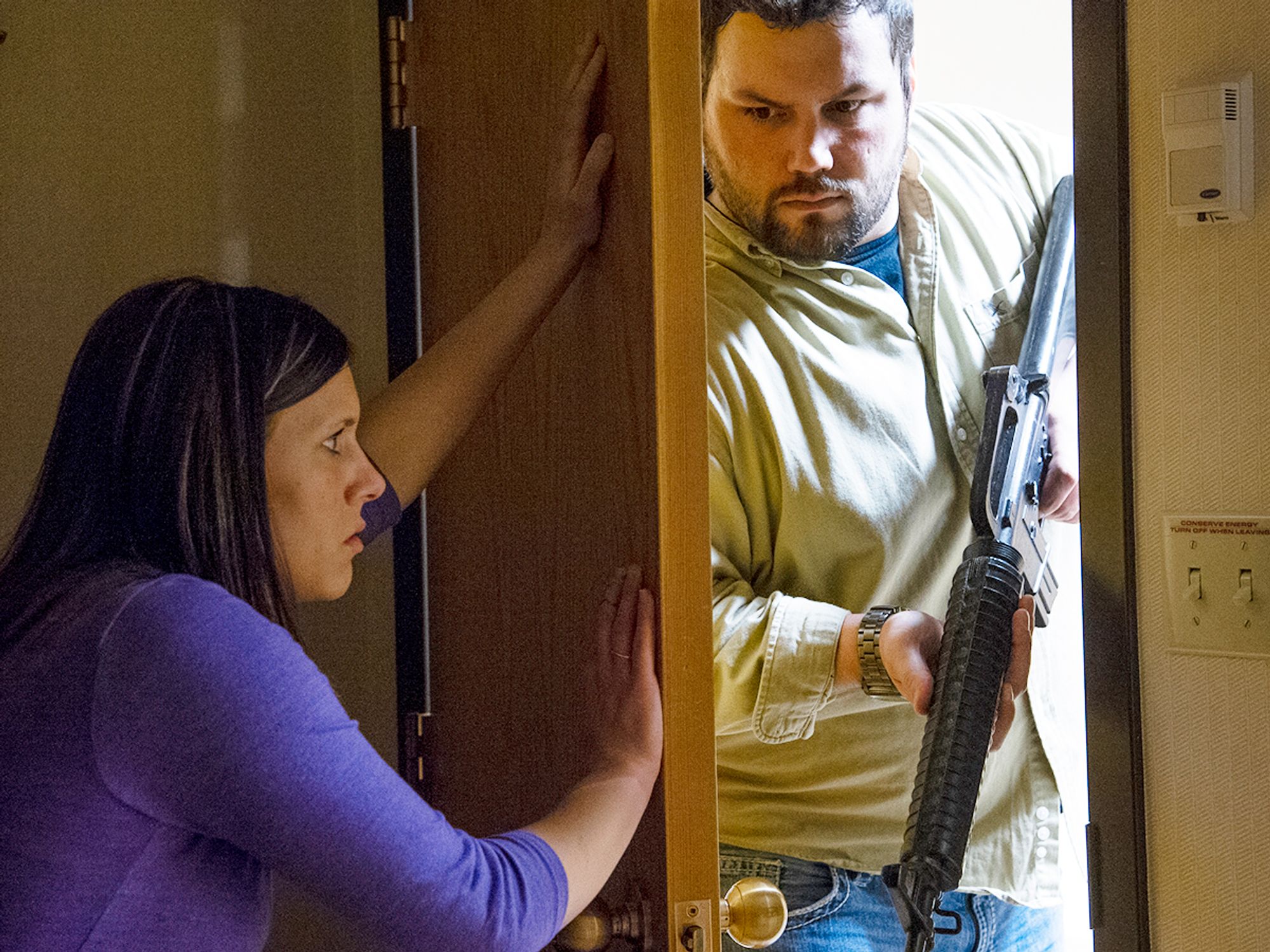Denying the active shooter access

- Find locations that provide cover and concealment when exiting is not an option.
- Lock and barricade doors when possible, and avoid hiding in easy-to-spot locations.
- Plan ahead and take steps to prevent exposure and injury.
If safely exiting the area is not possible, the next step is to actively find a location that can keep the attacker away. Ideally, this location should offer both:
- Cover (to avoid getting hit by a bullet), and
- Concealment (to hide from the shooter).
Lock the door if possible, and use anything available to barricade it, such as tables, desks, chairs, or other heavy objects.
Simple actions like these have proven effective in thwarting an active shooter who wants to cause as much harm as possible in the shortest amount of time. When the door is locked, the shooter typically moves on to find the next open door. If the door does not have a lock, try other methods of preventing entry. For example, binders can act as door stops for doors that open inwards, and belts can be wrapped around the closer arm of a hydraulic door to keep it from opening more than a few inches.
Never hide under a table or desk. This strategy alone will not provide any safety. Just because the shooter cannot be seen doesn’t mean the shooter cannot still see others. While this may be a familiar “duck and cover” position, it turns people into easy targets in an active shooter situation.
Use available resources and plan ahead
If a “go bag” is placed in the room, it will contain useful items. A “go bag” is simply a bag filled with items that can help a person survive an emergency situation. During an active threat incident, door stops, a window punch, and even a bleeding control kit can all help to save a life.
If the shooter is able to see inside a chosen hiding location, the room should appear empty. Increase invisibility by:
- Shutting off the lights,
- Staying away from windows,
- Lining up against the wall with the door on it,
- Being quiet,
- Silencing cell phones, and
- Turning off the phone’s vibration feature.
While waiting, start mentally creating a backup plan. Think about next possible moves. If running is the best option, think through which direction to go in. If fighting back becomes the only option, consider different defense maneuvers options to be prepared for any situation.
